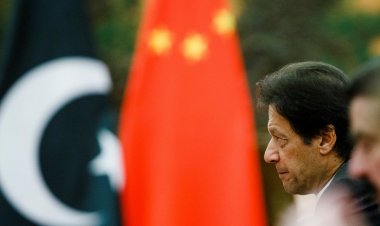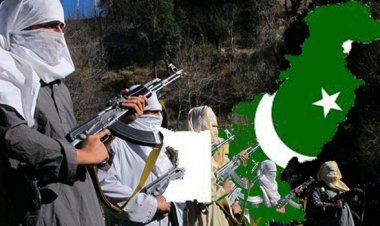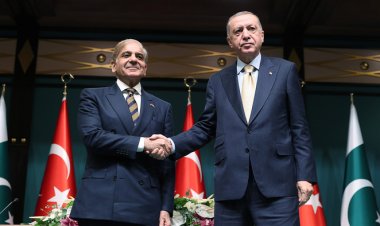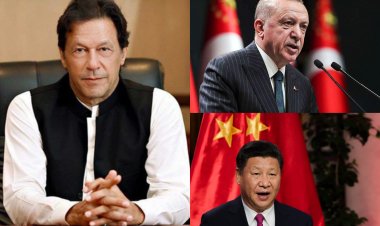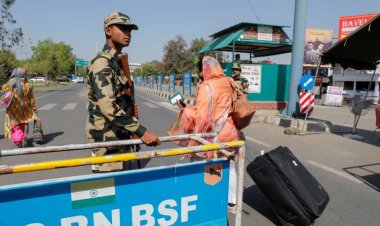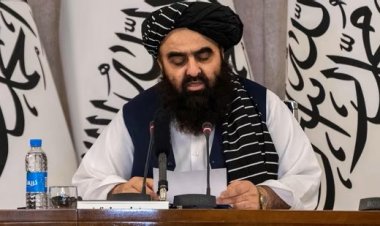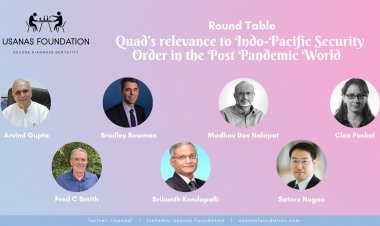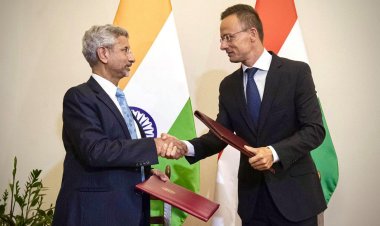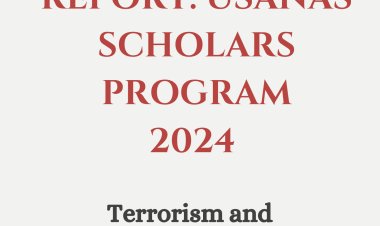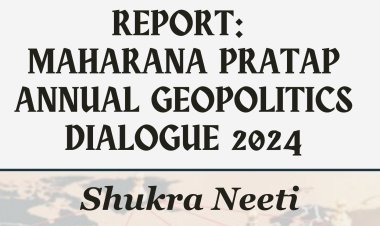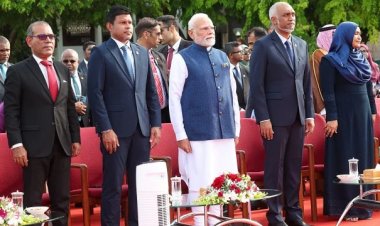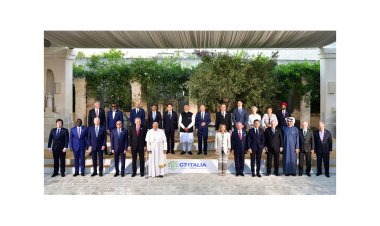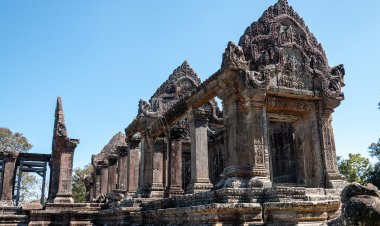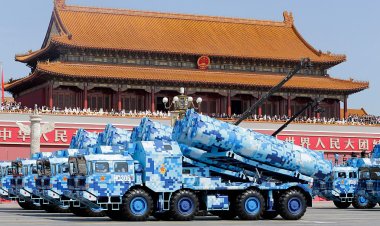India has no Reason to Engage the Rogue Terrorist Regime of Taliban
After 20 years of construction work, India has a bleak future in Afghanistan
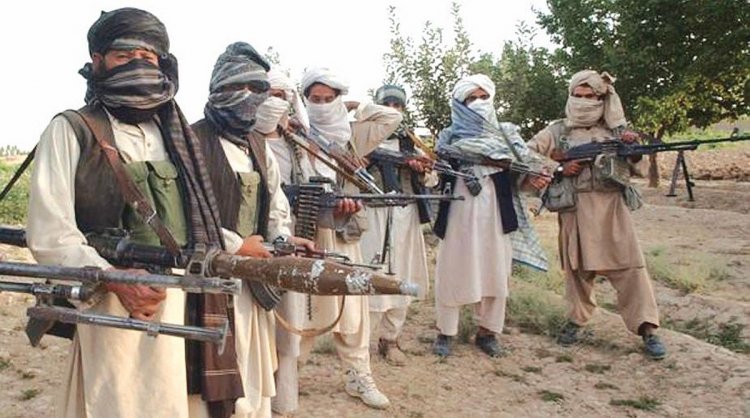
Commentary
By Abhinav Pandya
The ascendance of the Taliban seems more or less final, after the US-Taliban Doha deal (Feb.2020). With the inevitability of the emergence of a deadly terrorist group as a legitimate government in the new South Asian security architecture, some of the sanest, wisest, credible and expert voices have begun suggesting that India, the only legitimate liberal democracy in the region should engage with the Taliban. Such voices include veteran diplomats and Afghanistan experts like Zalmay Khalilzad, one of the principal architects of the US-Taliban Doha deal, think-tanks like Carnegie, former president Hamid Karzai, prestigious media houses and a range of strategic affairs experts. Such voices reason that the Taliban of 2020 is different from its 1994-95 version, and it is an enemy of IS-KP.
However, the ground realities tell an entirely different story, which is why this author believes that the idea of India engaging the Taliban is a non-starter.
First and foremost, what do we imply by engaging the Taliban, precisely? The engagement has to be for specific objectives, which India needs to clearly spell out and then assess if there are sufficient reasons to believe that they can be achieved through the dialogue, bargain, or any other form of engagement with the Taliban. Frankly speaking, if India expects the Taliban to cut-off ties with ISI and its proxies like LeT, Jaish, and Haqqanis, it is unlikely to happen. Hence, merely indulging in diplomatic photo-ops to please the western narrative will only end up giving legitimacy to a rogue terrorist organization.
The latest Pentagon report states that Pak continues to harbor the Taliban and Haqqanis. That said, why should Taliban engage with India to the latter’s benefit? Also, even if they engage, will it not be for subterfuge? Secondly, whom to engage? Strictly controlled by ISI, Taliban’s Quetta Shura, and its sword arm, Haqqani’s Peshawar Shura leadership is in Pakistan, to which India has no access. Moreover, if India is to engage a set of rogue terrorist leaders acting as Pakistan’s proxies, the question arises why not India engage Pakistan’s other proxies such as HM, LeT and Jaish. While deliberating upon the idea of engaging the Taliban, the Indian politico-security apparatus might want to consider if India, the world’s largest secular-liberal democracy, can support an Islamist emirate in Afghanistan, which has a track record of extreme levels of intolerance towards minorities and gender rights.
Notably, Pakistan’s raison d’etre behind creating a foothold in Afghanistan was to build a ‘strategic depth’ against Indian aggression, the need for which Pakistan realized during the 1965 war when the Indian troops were within the few miles of Lahore. Today, Pakistan controls a robust terror infrastructure in Afghanistan with an array of jihadist groups at its beck and play. Interestingly, Pakistan's firm entrenchment in Kashmir as a menacing stakeholder coincides with the strengthening of the Taliban in Afghanistan in the 1990s. This author interviewed many former terrorists in Kashmir, for his upcoming book on Kashmir’s terror financing. Most of them confessed to having received their training in Afghanistan. Many of them even trained along with the Taliban. The practice continues even today. Most recently, on April 16, 2020, the Afghan forces neutralized ten cadres of Jaish-i-Muhammad, the outfit responsible for the Pulwama suicide bombing, in a raid on the Taliban training camp. It hardly comes as a surprise because Jaish and the Taliban subscribe to the same hardline Deobandi school of Islam. Taliban also maintained strong ties with Lashkar. Reportedly, Haqqani network and Lashkar have conducted many joint terror operations. Many Taliban mujahideen have fought in Kashmir as a part of LeT and alongside Pak-sponsored local terrorist groups. Then, the support and shelter extended by Taliban to Harkat-ul-Mujahiddin (HuM) terrorists who hijacked the Indian Airlines plane IC-814 and flew to Kandhar is an open secret in the intelligence world. The HuM terrorists stayed in Kandahar for eight days and escaped after the deal with Indians, even though they murdered a passenger. And, the Taliban regime stayed a silent spectator. Before this incident, HuM terrorists were already running training camps in Taliban-led Afghanistan.
In all likelihood, the Taliban’s ascendence to power will only be a critical security threat to India, especially Kashmir. After the abrogation of article 370, the militancy is on the decline in Kashmir, and the region is on its way towards ‘mainstreaming’ with India. Pakistan is desperate to revive its credibility among its supporters in Kashmir by reviving militancy. Hence, the US withdrawal and the Taliban’s ascendance will give it a backyard to shelter and train its terrorists, and avoid the FATF scrutiny. The PoK-based launch pads are likely to be shifted to Afghanistan, giving Pakistan plausible deniability in the event of a Pak-sponsored terror attack in India. Reportedly, the process has already begun. With Americans out, ISI will move a large chunk of highly trained and battle-hardened Taliban fighters to Kashmir. Reportedly, in Feb. 2020 meeting of the ISI Brigadiers of Kashmir desk and terrorist commanders at the residence of LeT chief Lakhwi, it was decided to move terrorist cadres of Al Badr, which has close ties with Haqqani group, to Kashmir. In a big push to infiltration, 150-200 terrorists, including Afghan veterans, have already infiltrated into Kashmir, and around 450 terrorists are waiting in the launchpads to infiltrate. As it has always been the case, with a favorable political set-up in Kabul, Pakistan feels emboldened to indulge in militancy-related adventures and military-offensives against India.
Further, some of the recent statements by the Taliban leadership do not bode well for any fruitful engagement. Chief negotiator Stanikzai said that India has always sided with traitors in Afghanistan. Oft-cited Taliban’s statement of non-interference in Kashmir came only after a series of social media posts threatening to capture Kashmir, attributed to its spokesperson Zabiullah came and India worked backchannels to seek clarification.
Contrary to what many analysts are suggesting that the Taliban is revising its relationship with the ISI, the recent statements of the Taliban leadership hardly reflect such a breakthrough. Instead, they confirm a secure grip of ISI over the Taliban, in the ambit of which Pakistan is not only using the organization for terrorist attacks but also for psy-ops to put pressure on India.
A critical issue about the seating of the Taliban in power will be the strengthening of Turkey’s foothold in Afghanistan. There are various reasons. First and foremost, RT Erdogan’s caliphate ambitions have impelled the orthodox and revisionist Islamist leader to make extensive outreach to the Muslim communities across the world and the jihadist terrorist groups in various conflict theaters. Turkey’s relationship with Al Qaeda, ISIS, rebels in Syria, Al Shabab, and the Muslim Brotherhood is an open secret. It is highly likely that the commandos and terrorism experts of Sadat, Erdogan’s secret army, will be landed in Afghanistan. Secondly, Turkey has developed a keen interest in supporting its friend Pakistan in Kashmir. After the abrogation of article 370, Turkey has been blatantly vocal against India on a range of issues. Such fears are not unfounded. Recently, the Taliban declared that in the future, they would be trained by Turkey. Qatar, where the Taliban is based, is a close friend of Turkey. The author’s informed sources also confirmed that a large number of Kashmiri separatists, Islamists, and activists are operating from Turkey.
With its strong foothold in Afghanistan, Turkey is highly likely to assist Pakistan’s Kashmir-centric terrorist groups with advanced training, cyber operations, and the supply of high-quality weapons. A recent intelligence report has already suggested that the terrorist groups in Kashmir will use drones to attack the military, police, and civilian installations. It is highly likely that they will benefit from Turkey’s state-of-the-art Byractor TB2 drones, which made the recent Turkish operations against Russians and the Syrian Arab Army a considerable success. Besides, Turkish intelligence and Sadat, with Pakistan, are also likely to control TTGs like AQ and IS-KP in perpetrating terrorist attacks and other sabotage activities in the other states of India.
Taliban regime is likely to be a safe heaven for TTGs like AQ and IS-KP. Though Pompeo and Khalilzad may have fanciful notions of the Taliban being a potential counterterrorism partner, one has to reckon with the fact that the Taliban has not yet formally renounced AQ. Through the 1990s, the Taliban continued to lie about its ties with Al Qaeda. Then Sept. 11 happened, and there was nothing more to hide. Finally, the Americans killed Osama Bin Laden in Abbottabad in Pakistan near the army installation, tearing apart the last few shreds of Pakistan’s claims of being a partner in the global war against terrorism. Last year, Afghan and American forces killed the AQIS chief Asim Umar in a raid on Taliban compound. AQ’s leadership lauded Feb. 2020 Doha deal as a victory for the Taliban over the US forces.
The IS-KP group will also flourish during the Pakistan-supported puppet regime of the Taliban. Pakistan might have successfully created the smokescreens of IS groups in Afghanistan to portray itself as a victim of terrorism and a frontrunning fighter against IS, the fact of the matter is that IS-KP has robust ties with ISI. It is just one of the recycled terrorist group on the lines of recently-created “The Resistance Front,” in Kashmir, with names absolving Pakistan of any culpability.
Further, Rawalpindi understands that after the Americans coopt the Taliban, the possibility of Rawalpindi losing its leverage over the Taliban to some extent does exist. That said, Pakistan is expected to do its best to protect its 30 years of investment in the Taliban. Authors’ credible interlocutors suggest that since the beginning of its intelligence games in Afganistan, Pakistan has created factions based on tribal and ethnic identities, knowing it well that their internal differences would be the best armor to protect its control over the warring factions of Afghanistan. IS-KP is also one such group that Pakistan can successfully use to keep the Taliban in check. The IS-KP mostly consists of Orakzai Pashtuns, members of TTP, and disgruntled members of the Taliban. Reportedly, they get $700 per month, quite a handsome amount in a place having unemployment rates as high as 50 to 60 percent. Such decent remunerations hardly come without state entities supporting such groups. Reportedly, Pakistan is also trying to project the Haqqani group in the Taliban government, again, to keep a check on the Taliban. Haqqani network has secure connections with LeT. Given the strong presence of Haqqanis in the Taliban set-up, it can be quite a challenging task to dream of India engaging the Taliban and yet keep one’s sanity intact.
Whether it is AQ or ISIS, in their recent threats, they have explicitly targeted Kashmir. Many Indians from Kerala have already joined IS-KP. In the future, many more could join either AQ or IS-KP. In the Taliban regime, they will have a safe base in Afghanistan to conduct their South Asia operations.
Pompeo and Khalilzad might have enough irrational reasons to get enamored with the illusory notions of the Pakitan-Taliban’s sincere intent to restore peace, the ground realities suggest otherwise. Beginning with Pakistan, Islamabad released Daniel Pearl’s murderer, Masood Azhar still operates freely in Pakistan and Kashmir has witnessed a significant spike in infiltration and terrorist attacks. In Afghanistan, since the Doha deal, violence has risen exponentially. According to the Reuters report, 4500 incidents of Taliban attacks on security forces have taken place. The attack on the maternity hospital, killing newborn babies, the brutal murder of 27 Sikhs in Kabul gurudwara, and a suicide attack on funereal procession in Nangarhar, claiming 24 lives, project a glimpse of what is likely to happen in Afghanistan once the Taliban takes power. Though the US has blamed IS-KP for the attacks on civilians, the NDS has found compelling evidence of the involvement of Taliban and ISI in the attacks on civilians. India’s envoy Amar Sinha, in his interview with The Hindu, quoting intelligence reports, said that the Taliban has decided not to own up attack on the civilians as that is left to IS-KP.
Hence, for India, engaging Taliban 2.0 is not just a question of engaging an unfriendly government. Instead, it is a question of dealing with an intractable security threat, with which it has only limited ways of countering. There is a fundamental conflict between the Islamo-fascist ecosystem of the Taliban, Pakistan, and its other proxies in the region and India’s national security as well as its constitutional and civilizational values.
American security expert Michael Rubin, aptly summarizes, the Taliban is to Pakistan what Hezbollah is to Iran. Possibly, if Americans work out a successful strategy to constructively engage Hezbollah, India might take a leaf out of the American playbook to engage with the Taliban.
Abhinav Pandya is the author of “Radicalization in India: An Exploration” and Founder and CEO of Usanas Foundation.
Disclaimer: The paper is the author’s individual scholastic articulation and the facts and figures quoted are duly referenced, as needed, and are believed to be correct.
The Sunday Guardian published the original version of this article.

